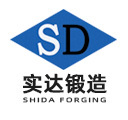Small knowledge about flanges | What difficulties are there in processing national standard flanges?
Release time:
2020-10-20
Author:
Source:
Abstract
What difficulties are there in processing national standard flanges?
The adhesion is simple, but when processing national standard flanges, the chips are hard, and the cutting temperature is high. When the hard chips flow over the front cutting edge, phenomena such as adhesion and welding occur, which affects the external brightness of the processed parts; the requirements for processing hardening are very strict. When using national standard flanges, there are many factors that affect the performance of national standard flanges. First, the annealing temperature under ideal conditions should be low enough to ensure the annealing of the primer sequence while being high enough to reduce non-specific separation. The reasonable annealing temperature is 55°C to 70°C. Secondly, it can sometimes be replaced by processes such as cutting, powder metallurgy, casting, hot forging, and sheet metal forming, or it can be separated from these processes to form composite processes.

recommend Reading
Forging flame heating equipment and its application 1 - Intermittent loading flame heating equipment
2020-10-20
Classification, characteristics, and equipment used in forging
2020-10-20
Standard for flange sealing gaskets
2020-10-20




